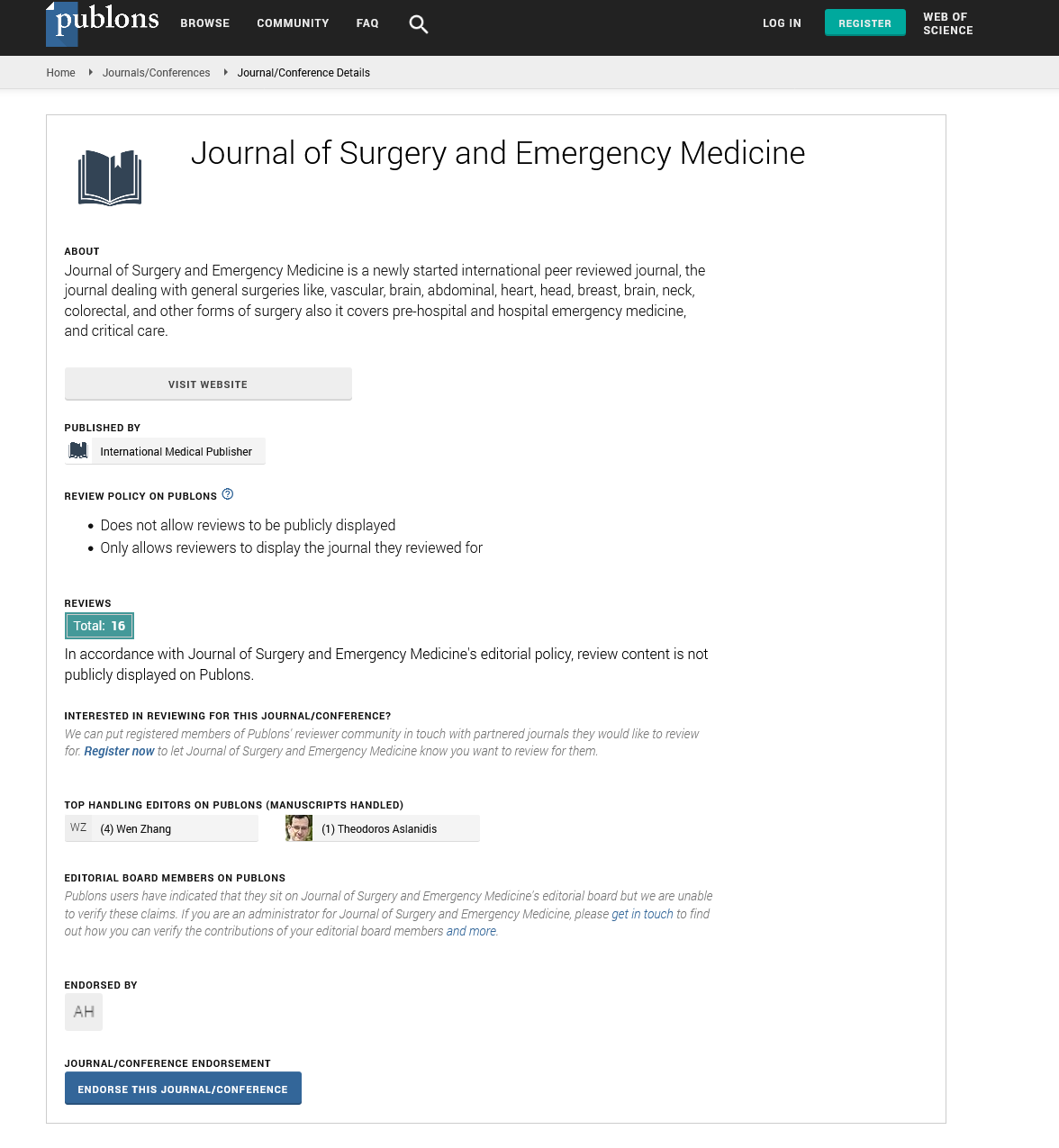Abstract
Correlation of the Oncoplastic Excision volumes with the Aesthetic Outcomes for the Upper Outer Quadrant Breast Cancer
Breast conserving surgery (BCS) has become the main surgical approach combined with radiotherapy for management of early breast cancer; there is still a growing race in the modern breast surgery to achieve more advanced and natural aesthetic results. Oncoplastic breast surgery (OBS) has emerged as more advanced surgical approaches which combine the principles of both the oncological and plastic surgeries to achieve those advanced results and to expand the tumour size indication in front of the conservative management. Excision volume ratio has replaced the classic indication of the tumour size for breast conservation and become one of the main determinants of the aesthetic outcome. Methods: From July 2016 to March 2019, 200 patients presented with UOQ primary breast cancer including multifocal and post neoadjuvant cases with predicted excision volume (PEV) less than 35% and fulfilling the other eligibility criteria of the breast conservative therapy; were evaluated, consented, operated and enrolled in this prospective study. The estimated excision volume (EEV) ratio was calculated by dividing the measured specimen volume by the calculated breast volume (BV); aesthetic outcomes were objectively evaluated 6 months after surgery by the semi-automated Breast Cancer Conservative Treatment (BCCT) core software. Patients were divided into six groups according to the EEV ratio and the objective BCCT core aesthetic results were analyzed for each group.
Results: Patients’ age has ranged from 28 to 64 years old (mean 42.7 ± 9.4 years), breast volume from 476 to 1170 cc (mean 836.5 ± 184.2 cc), specimen volume from 76 to 290 cc (mean 150.3 ± 47.5 cc), PEV from 6 to 32.7% (mean 16.03% ± 3.72%), and EEV from 7.5 to 34.5% (mean 18.29% ± 4.84%); total aesthetic results according to the objective BCCT core assessment were excellent in 41.5% (83 cases), good in 29.5% (59 cases), fair in 19.5% (39 cases), and poor in 9.5% (19 cases). More than 90% of the patients with EEV less than 10% have achieved excellent aesthetic results; EEV from 10 to 15% has achieved more than 60% good results; EEV from 15 to 20% has achieved around 50% fair results which have been approached the 70% in the 20 to 25% group; more than 40% poor results were noticed in the 25 to 30% EEV which were raised up to 75% in the 30 to 35% EEV.
Conclusion: Excision volume ratio has become one of the main determinants of the aesthetic results; its preoperative value can refer to the most suitable oncoplastic surgical technique for each patient, expect the forthcoming discrepancy and the necessity for contralateral symmetrization. Current study has revealed the necessity of discrepancy corrective surgery or performing volume replacement reconstruction with the EEV more than 20% in the UOQ and from 15 to 20% in the fair results according to the patients’ preference.
Author(s): Mohamed I. Abdelaziz
Abstract | Full-Text | PDF
Share This Article
Google Scholar citation report
Citations : 131
Journal of Surgery and Emergency Medicine received 131 citations as per Google Scholar report
Journal of Surgery and Emergency Medicine peer review process verified at publons
Abstracted/Indexed in
- Google Scholar
- Publons
Open Access Journals
- Aquaculture & Veterinary Science
- Chemistry & Chemical Sciences
- Clinical Sciences
- Engineering
- General Science
- Genetics & Molecular Biology
- Health Care & Nursing
- Immunology & Microbiology
- Materials Science
- Mathematics & Physics
- Medical Sciences
- Neurology & Psychiatry
- Oncology & Cancer Science
- Pharmaceutical Sciences
